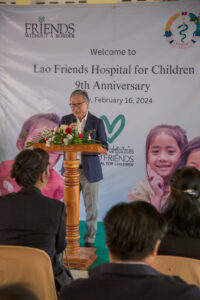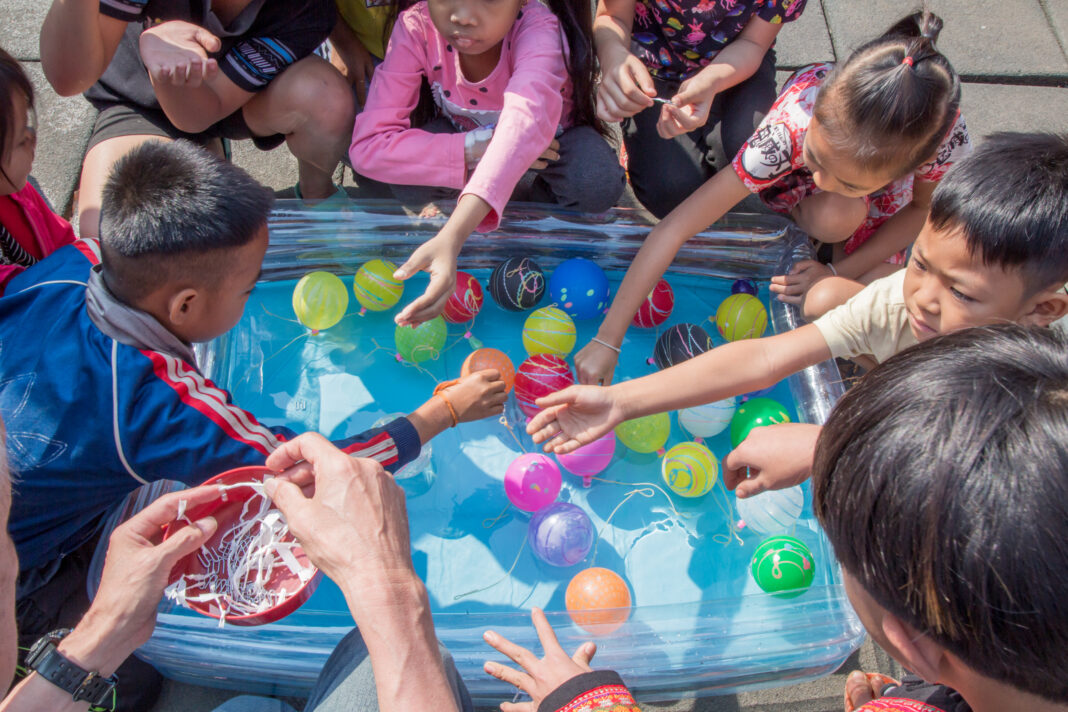Just a decade ago, children in northern Laos grappling with thalassemia faced a grim reality, lacking proper care and support. Medical professionals were inadequately trained to address such deadly diseases, and essential equipment was scarce.
Today, things look a bit different. The Lao Friends Hospital for Children (LFHC) in Luang Prabang stands as a lifeline for thousands of children every year. Recognized as Northern Laos’ referral hospital, LFHC can now offer vital care to severely ill children with its High Acuity Unit, and neonatal and developmental clinics.
Dr. Annkham Thammaseng, the hospital’s Medical Education Director and a dedicated Lao pediatrician, expresses optimism about the evolution of child healthcare in Laos over the past decade and the ones to come.
“The introduction of the High Acuity Unit has been crucial in saving the lives of young patients in need of ventilation,” she said.
“Our long-term goal is a full transition to Lao management and direction,” Annkham added. “Now we are already transitioning, for example, I am Lao, and our medical director is Lao, as are other managers in the hospital.”
Since its establishment in 2015, LFHC has served over 200,000 children with essential medical care that was previously inaccessible in the northern regions. Annually, the hospital treats approximately 38,000 children, a number that continues to grow steadily.
However, as the number of young patients continues to grow, ensuring free access to pediatric healthcare at LFHC becomes increasingly challenging. But despite these hurdles, nine years since its inception, the hospital has persistently expanded its human and technical capacity, remaining the sole free children’s hospital in northern Laos, LFHC fills a critical gap in the region’s healthcare landscape.

According to Kenro Izu, LFHC’s founder and honorary president, speaking at the 9th anniversary event on 16 February, the hospital’s success stems from its comprehensive healthcare approach, which extends beyond mere treatment to serving as a hub for training and capacity-building among healthcare professionals across the northern regions.
Almost a decade after its first operations, the hospital still offers vital healthcare services often inaccessible elsewhere, including thalassemia, nephrology, and orthopedic clinics. It also boasts one of the nation’s finest neonatal units with 24 beds available and the only specified development clinic catering to children with Down syndrome, autism, cerebral palsy, and other developmental conditions.
Dr. Annkham also emphasized the hospital’s commitment to nurturing local talents, with a long-term vision of transitioning to Lao management and direction.
“We have implemented a robust education system where every clinical staff member receives foundational training in pediatric care and specialized training in their respective clinical areas,” Annkham added. “The hospital’s support extends to training Lao doctors to become pediatricians; six of them have returned to work at LFHC, bolstering the confidence of local staff and reducing the dependence on volunteer healthcare workers.”
Despite its remarkable achievements, LFHC faces significant challenges, with child malnutrition being the chief among them. Laos grapples with the highest rate of child malnutrition in Southeast Asia, affecting approximately 40 percent of its young population. LFHC has taken proactive steps to address this issue, designated as the leading provider of malnutrition management in Laos in 2023.
Collaborating with partners like UNICEF, LFHC spearheads prevention programs aimed at combating malnutrition in underserved districts, providing support, education, diagnosis, and referrals to at-risk communities.
These projects, however, have not only transformed individual lives but have also laid the groundwork for a healthier community.



